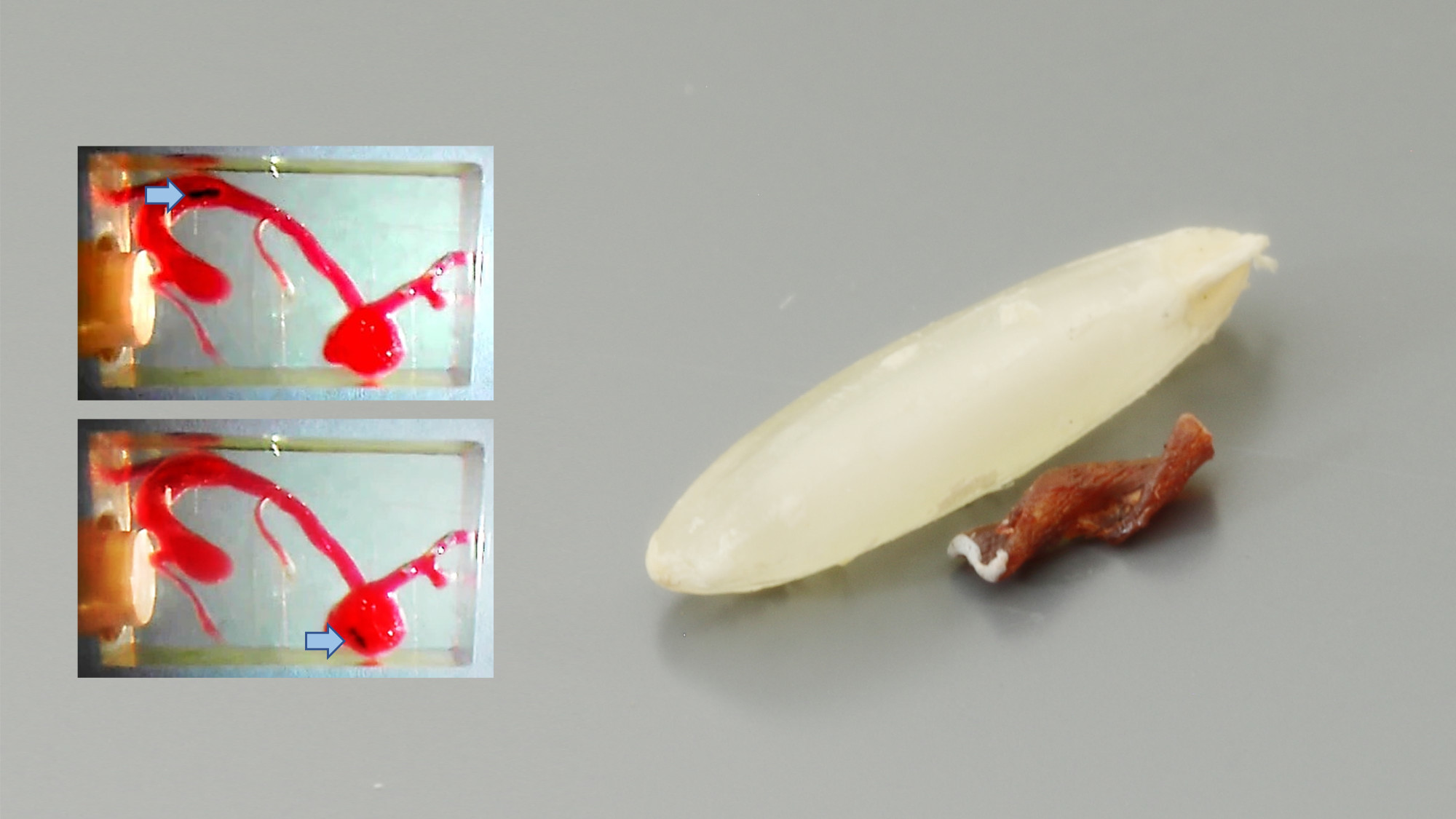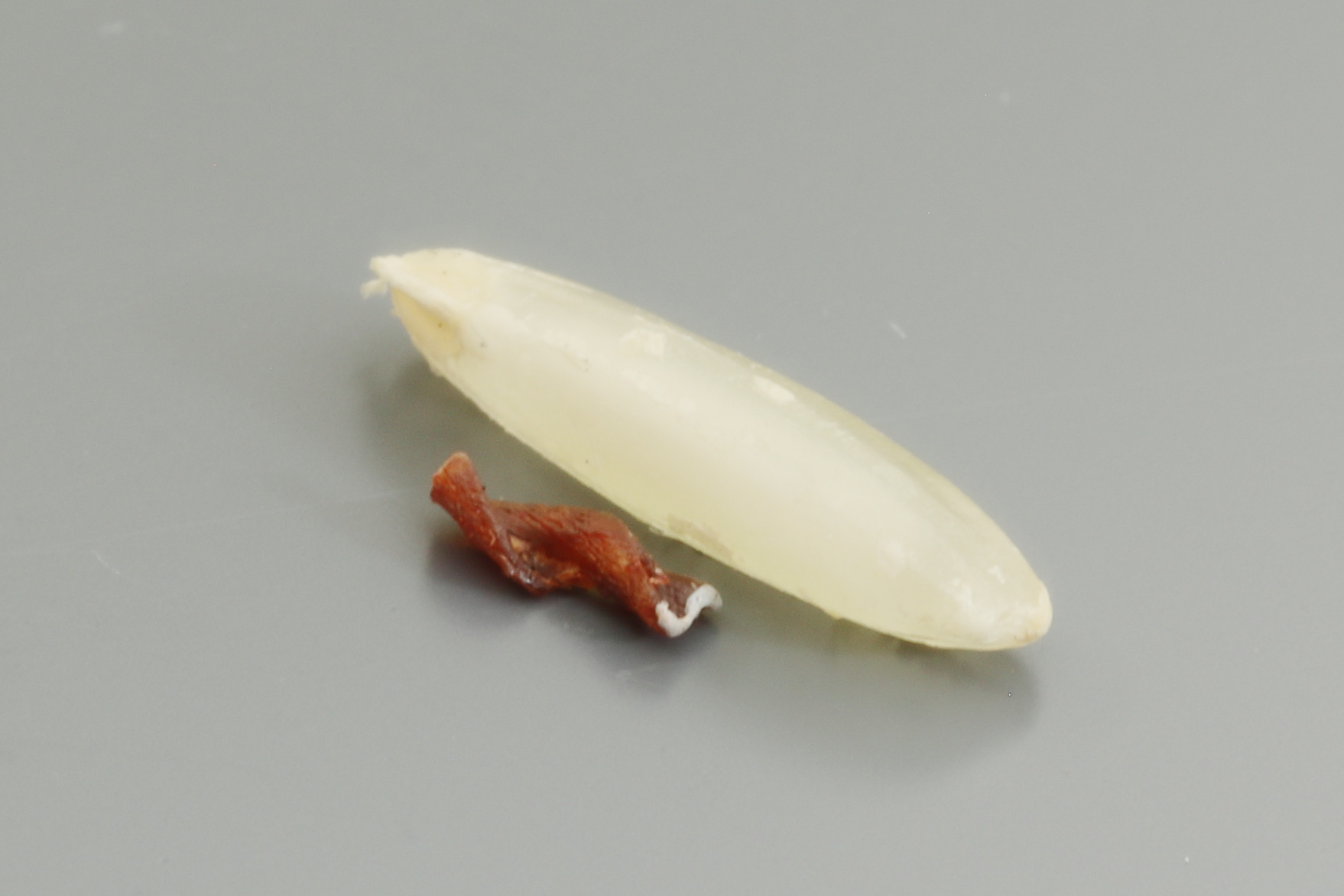Magnetic submarines for medicine
At the Institute of Medical Engineering (IMT), the University of Lübeck and the Fraunhofer Research Institution for Individualized and Cell-based Medical Technology IMTE, tiny floating robots are being developed that will be able to navigate through the body like submarines in the future. With this new treatment option, drugs are to be brought specifically to their site of action and interventions in areas of the body that are difficult to access are to be carried out very gently.
The developed microrobot is smaller than a grain of rice, namely only 3 mm long and 1.2 mm wide. The scientists of the Institute of Medical Technology and Fraunhofer IMTE, together with the Clinic of Radiology and Nuclear Medicine and the Clinic of Neuroradiology of the UKSH, Lübeck Campus, have steered such a microrobot through a model of the middle human cerebral artery to an artificial aneurysm with the help of magnetic fields. The original work was published in the renowned scientific journal Scientific Reports on 07 July 2021.
The goal of the scientific team from University, Fraunhofer and Clinic is to perform medical interventions and treatments as gently as possible and to administer drugs in such a way that they have an enhanced effect at the site of the disease. "We have developed a magnetic microrobot that can be steered through the human body using only magnetic fields. In the future, this robot could deliver drugs directly to a tumor, for example, and thus reduce side effects of chemotherapeutic agents," says Anna Bakenecker, research associate at Fraunhofer IMTE.
The magnetic microrobot can also be used to treat blocked blood vessels or aneurysms. Aneurysms are bulges in blood vessels that can continue to expand until the vessel wall bursts. This is life-threatening, especially in the brain. That's why, when aneurysms are treated, small wire meshes are inserted into the aneurysm via a catheter, causing the blood in the bulge to clot and preventing further expansion. "If a microrobot can be brought into the aneurysm remotely and close it, that would be a great advance," says Dr. Franz Wegner, a radiologist at UKSH.
The microrobot was designed using additive manufacturing - i.e. medical 3D printing - and coated with a magnetic lacquer. Magnetic nanoparticles produced at the Institute of Medical Technology were used for the coating. Rotating magnetic fields cause the magnetic microrobot to rotate and move forward. "We created a model of a middle cerebral artery from patient data, through which we were able to successfully steer the microrobot into an aneurysm," says Dr. Hannes Schwenke, a neuroradiologist at UKSH. This is an important first step before moving into clinical application.
To track the movement of the microrobot, the research team used the tomographic real-time imaging modality "magnetic particle imaging", which is also being researched at the Institute of Medical Technology in cooperation with Fraunhofer IMTE in Lübeck. Magnetic particle imaging (MPI) visualizes the magnetic nanoparticles with which the microrobot is coated - and does so without radiation, because only magnetic fields that are harmless to the body are used. Simultaneous control by magnetic fields and monitoring with magnetic particle imaging creates a theranostic method that opens up entirely new medical applications.
Publication:
A. C. Bakenecker, A. von Gladiss, H. Schwenke, A. Behrends, T. Friedrich, K. Lüdtke-Buzug, A. Neumann, J. Barkhausen, F. Wegner & T. M. Buzug. Navigation of a magnetic micro-robot through a cerebral aneurysm phantom with magnetic particle imaging. Scientific Reports 11, 2021. doi:10.1038/s41598-021-93323-4


